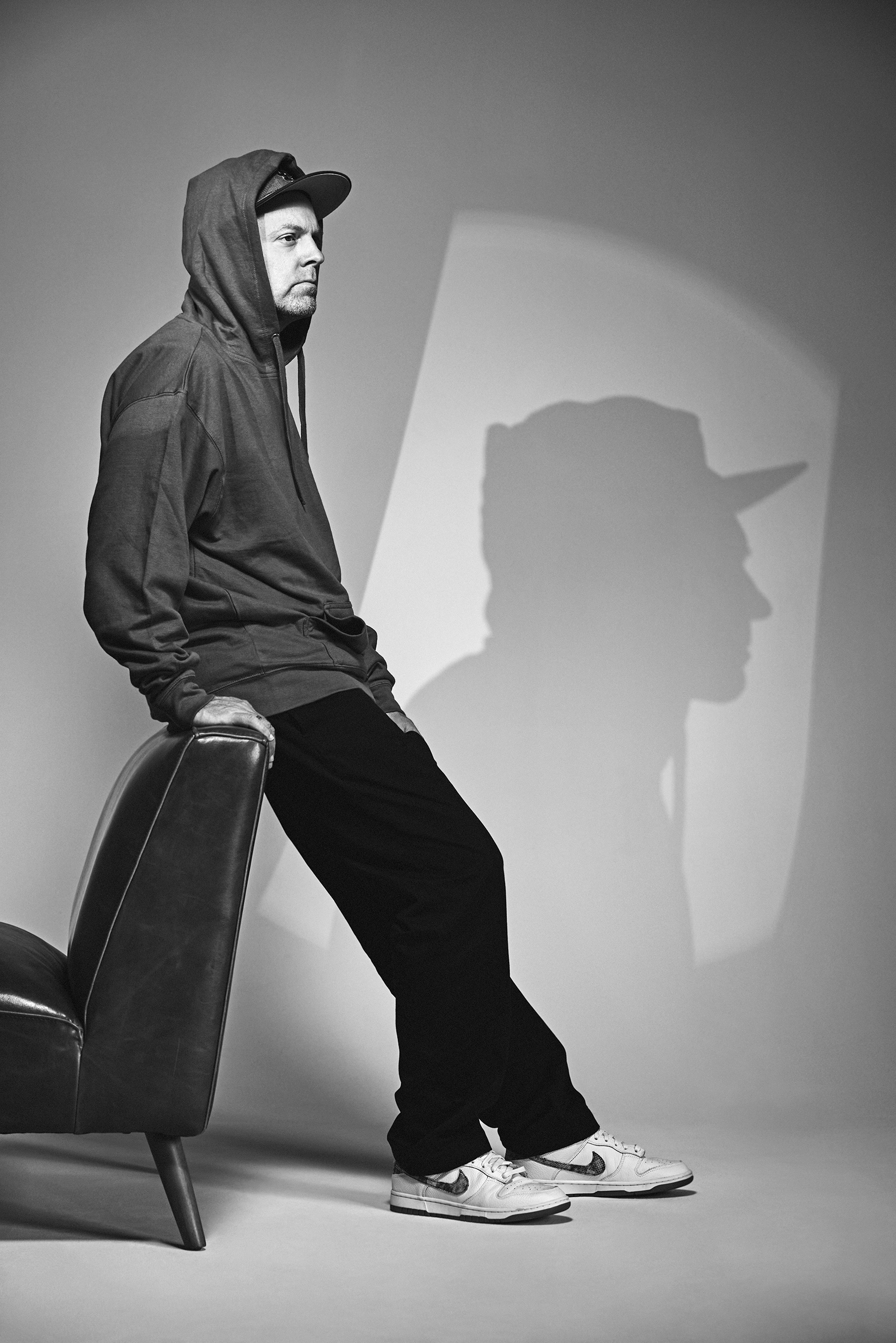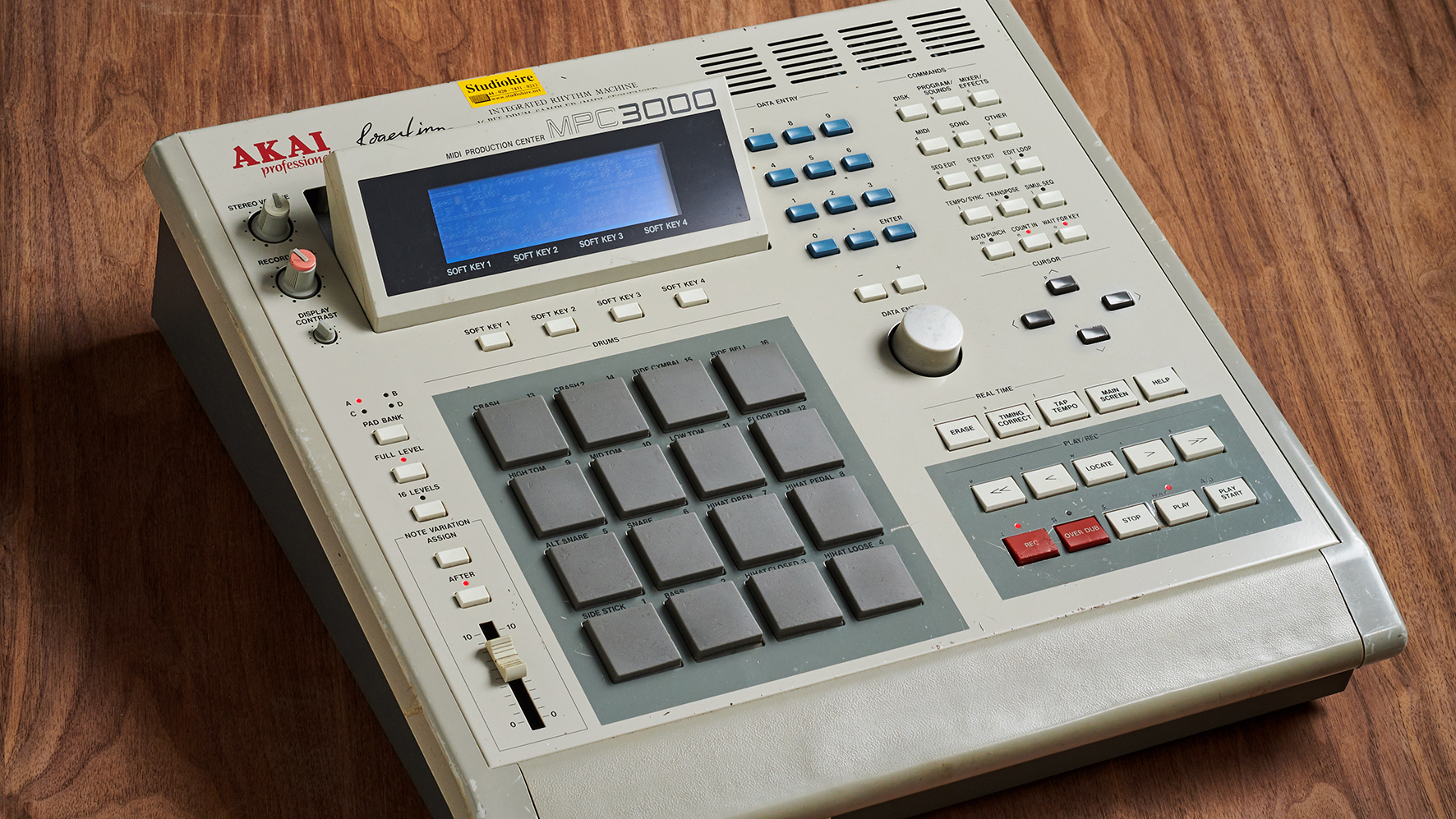“The core thing to remember is that your beats are slow - 90 bpm maximum - and they are filthy”: Unpacking the dark, sample-based sound of trip-hop
Trip-hop defined both the 90s and a certain British city. It set the blueprint for today's down-tempo sounds, so here's how you too can get trippy.

Trip-hop might have been a term invented by a journalist, but it ended up being a handy umbrella for a lot of artists to thrive under, plus it gave a city a musical identity and a lot of music production technology a purpose. Welcome to the most laid-back of nineties grooves: trip-hop.
In June 1994, Mixmag's Andy Pemberton described the burgeoning Bristol and London trip-hop scene as, “a deft fusion of head-nodding beats, supa-phat bass and an obsessive attention to the kind of other-worldly sounds usually found on acid house records”.
And, he pretty much nailed it. Trip-hop was the low-tempo - and highly-cool - music genre that came from technology, and would also help to sell music technology. It was a reluctantly accepted label given to a musical form that could truly encompass everything, taking elements of dub, drum 'n' bass, breakbeat, reggae, cinematic (a lot) and, of course, hip-hop.
As with so many music genres, trip-hop's origins can be placed in several locations at several times but can largely be focussed on two west coasts: America with DJ Shadow, and the UK with sound systems in Bristol including the Wild Bunch and producers like Tricky, Massive Attack and Portishead.
Really, though - and bear in mind this opinion comes from a website that loves music gear - trip-hop came from sampling and the ability to sample everyone and everything.
In the late '80s and early '90s, advances in sampling hardware (more specifically the increasing amount memory contained within it) meant that pretty much everything was game for being sampled. Up until then, sampling meant grabbing a brass or guitar stab here, an 'ooh' there or an 'aah' over there. As long as it was short and to the point you could use it in any horrific late '80s novelty pop record.

As technology boomed, though - and the turn of the decade from the '80s to the '90s was certainly a boom time for RAM - sample times became longer, as did producer's attention spans.
This meant capturing easy breaks from stacks of vinyl, film snippets (because no-one cared or knew about copyright back then), real instrument grooves, the odd Akai sub bass, as well as any kind of deep and meaningful vocal sample, and then throwing it through a bank of filters and other (again, low-cost) effects, and releasing it on an increasing number of very cool labels all trying to be Mo' Wax.
“All you need are crazy beats and fucked up sounds,” said Pemberton, and the producers gathering them would be many and varied, some schooled in the art of dance music at much faster tempos, many already bored with 4/4 beats, and others focussed on the gentler climbs of the second half of the club night. The come-down period was so welcome after a frantic and euphoric time in the main room, it needed something slower, something more trippy, something that melded hip hop and those messed up beats. Let's call it trip-hop, said Pemberton.
Want all the hottest music and gear news, reviews, deals, features and more, direct to your inbox? Sign up here.
Very soon, trip-hop became massive and overground - and it wasn't just about the ground-breaking Bristol massive and Shadow-like figures. These became reluctant trip-hoppers as mainstream artists started to get in on the action, before long, everyone from Björk to Goldfrapp, Morcheeba to Groove Armada were slowing down their beats and filling the charts.
Established dance stars would also reduce bpm's, even if they would just use the results as album fillers - The Prodigy, Chemical Brothers, Underworld and more would all embrace anything around 90bpm at one point or another.
But it was the city of Bristol that ultimately became the trip-hop capital, and it would thrive under the monicker.
Key bands, like Massive Attack and Portishead would not only appeal to the super cool and chilled, but the dinner party elites, who welcomed the more tuneful side of trip-hop and its more sophisticated vibe.
Trip-hop became the soundtrack to a million servings of sun dried tomatoes and seared tuna, then, and ultimately became a victim of its own success. As with all music genres, though, the core sound very much lives on, with playlists, genre streams and other all-consuming download charts keeping the vibe alive, while chillout and lo-fi music (which trip hop can be held largely responsible for advancing) will always find homes between 2 and 6am.

Trip-hop: Key elements
What are the key elements of trip-hop?
The core thing to remember is that your beats are slow - 90 bpm maximum - and they are filthy. Your bass is large and dominant and you'll ideally have some vocal hooks and illegal-sounding film stuff. Oh and some strings, don't forget the strings…
1: Beats 1
Because sampling memory had increased so much by the early 1990s, so then could sample time, and this meant entire drum loops would be a trip-hop producer's target, and the more obscure, the better. If you could source a 1930s jazz album (which originally only had two copies pressed) and it had an isolated, shuffling break on it, then that would be your perfect trip hop ingredient. Use the then new fangled 'time-stretch' technology to take it up or down in tempo to between 70 and 90 bpm and loop it. But that was just the start.
2: Beats 2
To show your true trip-hop colours, your source would naturally be that ridiculously rare vinyl, but if *whisper* you'd lifted the break from elsewhere, like an Ed Stratton/Zero-G sample CD or a copy of Future Music magazine – then you'd have to do some work on it to make it 'truly trippy'. This could simply be by adding some saturation to make it more analogue - easy in today's DAWs - or some vinyl noise to make it more authentic (i.e less lazy).
3: Beats 3
Now take a leaf (or snare) out of DJ Shadow's book and really mess with your break. Use something like Propellerhead's mighty classic Recycle to pull out your break's constituent parts, re-order them, and totally own that loop. Nowadays, most DAWs can break your break up so just highlight some hits, copy and paste for easy hopping.
4. Sample!
Come on, it's 1995, you've got at least another half megabyte of RAM to play with, so as well as your break, you have plenty of room to sample some more stuff. Make it something deep and moving, maybe a cinematic vocal (just don't think about releasing it or prepare for legal action!).
Dig out that VHS copy of an old black and white 1940s film that no-one will know about, or a 1980s B-movie sci-fi horror flick starring Jean-Claude Van Damme (that no-one will know about). Now you've made it to trip-hop heaven.
If this doesn't sound particuarlly appearling, you can download a range of royalty-free hip-hop samples here that could form the core constituent beat of your trip-hop track.

5. Bass(es)
You've got several options here: a sub bass line that no-one will be able to hear unless they have a sound system the size of Clifton, dub bass effects that swirl and tickle your low end, or real guitar bass or fat Moog synth bass.
Whatever you choose, make it prominent, and make it shuffle and complement the beat as these two elements are essentially 90% of your song. If you like, you can now double the beat tempo and keep your bass at 90 bpm and you've suddenly invented jungle - yes it was that easy, but that's for another feature…
6. Strings
What's that? You still have a few kilobytes spare? Fill every last byte with whatever you can, and if you want maximum dinner party exposure, you simply must get a decent string-based chord progression in there.
Sample real strings if you can, otherwise dig out that '90s Korg/Yamaha/Roland workstation and hit the 'real stringey' preset. It's emotive, it's sophisticated, and Xander and Harriet might even stay for Black Forest gateau if you add some reverb.
7. Final effects
You don't really need to filth up your mix any more because it's so badly mixed in the first place, but what will really make this trip stand out from a typical seaside visit to Weston will be some crazy dub effects, filtered drum loops or some vinyl scratching. Ladle on as much as you can, like you've just doubled your memory with another 'meg', or upgraded from your Akai S-Series to an E-mu. Okay Akai fans, leave it…
Trip-hop example tracks
Some key trip-hop example tracks
1. DJ Shadow - In/Flux
Pemberton's feature on trip-hop cited this DJ Shadow classic as the first trip-hop tune, but Bristol's The Wild Bunch might take issue with him (and us) for suggesting it. Truth is, the 'first' is claimed in a lot of genres and the reality is a lot cloudier, for more reasons than one.
2. Tricky - Hell is Round the Corner
We wanted to include tracks from Portishead and Tricky, so here's a Tricky number with a sample that Portishead used - back then, producers in Bristol got on so well they even shared samplers, it seems. Anyway, Tricky was one of the earliest purveyors of trip-hop with his tunes among the trippiest of the lot. This is from his debut album Maxinquaye which featured classic '90s gear including an Atari 1040 computer, Akai S1000 sampler, and all recorded to an Alesis ADAT. “Good times,” we'd have said back then.
3. Grantby - Timber
A classic chillout tune from the mid-1990s and released on Bristol's classic A Cup of Tea Records. Cool label, ultra cool track with everything in place - strings, great groove, James Bond film samples - to make the ultimate trip-hop track. Big things were expected from Grantby producer Dan Grigson, and we're happy to report he still seems to be making music under the name The Beat System.
4. Massive Attack - Teardrop
Like all the best bands do, Massive Attack turned their back on 'pop hits' like this with later releases, disappearing under clouds of intense, impenetrable but (arguably) cooler smoke. But you can't fail to be moved by this, and the likes of Safe From Harm, Protection and Unfinished Sympathy. Gems of trip-hop, these sealed the genre's place in history and proved how cutting edge it was - little on your streaming device in 2024 sounds this good today.
5. U.N.K.L.E - Lonely Soul
By the late '90s trip-hop was so mainstream that just about everyone was riding at 90bpm, but Mo' Wax was still one step ahead, with headline act U.N.K.L.E not only featuring the double header of James Lavelle and DJ Shadow, but attracting every other big name from the decade.
The 1998 album Psyence Fiction featured Thom Yorke, Ian Brown and, on this track, Richard Ashcroft. It couldn't have been any more 1990s if it had featured John Barnes doing a rap and the Spice Girls on backing vocals, and would be one of the last great trip-hop releases of the decade, but what a way to bow out.
Andy has been writing about music production and technology for 30 years having started out on Music Technology magazine back in 1992. He has edited the magazines Future Music, Keyboard Review, MusicTech and Computer Music, which he helped launch back in 1998. He owns way too many synthesizers.




